21 Tasty European Meat Sauces That Bring Richness to Meals
European meat sauces represent a culinary treasure trove of flavor and tradition.
Culinary artisans have perfected these rich, complex condiments over centuries of passionate cooking.
Each sauce tells a unique story of regional ingredients and cultural heritage.
Skilled chefs transform simple components into extraordinary flavor experiences that elevate humble proteins.
Remarkable depth and complexity emerge from carefully balanced combinations of herbs, spices, and cooking techniques.
These sauces showcase the incredible nuance and creativity of European gastronomy.
Regional variations reflect local agricultural traditions and generational cooking wisdom.
The following 21 essential European meat sauces will transform your understanding of culinary excellence:
Essential European Meat Sauces to Transform Meals
European kitchens are famous for sauces that turn ordinary cuts of meat into something extraordinary. Discover gravies, reductions, and creamy classics for every occasion.
Ragu All’Anatra
Ragu all'anatra showcases duck as its star ingredient in a rich, complex Italian meat sauce originating from Tuscany.
Hunters and home cooks traditionally prepare this intense sauce with carefully selected ingredients like duck meat, guanciale, red wine, and aromatic herbs.
Chopped vegetables including garlic, onions, carrots, and celery form the flavor base of this robust sauce.
Guanciale renders fat while sautéing vegetables at high heat, creating deep flavor foundations.
Duck meat slowly simmers with red wine and tomato puree, developing complex taste profiles.
Herbs like sage, parsley, bay leaves, and thyme enhance the sauce's earthy undertones.
Cooks carefully filter the sauce to remove excess duck fat after meat becomes tender.
Restaurants and home kitchens typically serve this luxurious ragu over wide pasta like pappardelle or tagliatelle.
Ragu Alla Bolognese
Ragu alla Bolognese is a rich meat sauce originating from Bologna, Italy, known for its deep, complex flavor profile developed through slow cooking of ground meats with aromatics and wine.
Alberto Alvisi, Pope Pius VII's personal chef, crafted this iconic sauce in the late 18th century using beef, pork, or a combination of both meats.
Fresh tomatoes or tomato puree blend with red or dry white wine, creating a robust base enhanced by nutmeg, salt, and pepper.
Italian pancetta often adds extra depth, while milk or cream provides a silky texture.
Traditionalists serve this sauce exclusively with tagliatelle pasta, though it also complements lasagne, pappardelle, fettuccine, and homemade farfalle.
Generations of Italian families have perfected this sauce, transforming simple ingredients into a culinary masterpiece.
Regional variations exist, but the core of ragu alla Bolognese remains a testament to Bologna's gastronomic heritage.
Amatriciana
Amatriciana sauce embodies Roman culinary heritage with its rich, bold flavors originating from Amatrice, a small town northeast of Rome.
Crafted in the 17th century, this iconic sauce transforms simple ingredients into a magnificent pasta experience by sautéing diced tomatoes in guanciale's rendered fat.
Legendary Francesco Leonardi first documented the recipe in his 1790 cookbook LApicio Moderno, establishing its gastronomic significance.
Pecorino cheese adds sharp depth to the sauce, which traditionally coats spaghetti or bucatini pasta.
Celebrity films like Eat Pray Love have showcased its irresistible appeal, featuring Julia Roberts enjoying this classic Roman dish.
Guanciale, a cured pork jowl, provides the sauce's distinctive meaty essence.
Italian cuisine celebrates this sauce as part of Rome's pasta "holy trinity" alongside carbonara and cacio e pepe.
Sugo Di Carne
Sugo di carne is a rich, hearty Italian meat sauce blending ground beef and pork with a classic sofrito of onions, carrots, and celery.
Red wine and canned tomatoes infuse deep flavor into the sauce, while optional ingredients like tomato paste and porcini mushrooms enhance its complexity.
Salt and pepper season the mixture, creating a robust base for traditional pasta dishes.
Italians frequently serve this versatile sauce over penne, rigatoni, tagliatelle, fettuccine, and pappardelle, generously topping each plate with freshly grated parmesan cheese.
Sugo di carne also plays a starring role in classic lasagna preparations.
Slow simmering allows the ingredients to meld and develop a rich, nuanced taste.
Regional variations add subtle differences to this beloved meat sauce.
Sugo Alla Genovese
Sugo alla Genovese is a rich Neapolitan meat sauce with deep Genoese roots, simmered slowly to create an intensely flavorful culinary experience.
Naples claims this sauce as its signature dish, despite its misleading name originating from Genovese immigrants during the Renaissance.
Slow-cooking veal or beef with abundant onions, carrots, and celery transforms simple ingredients into a complex sauce that develops incredible depth over 2 to 10 hours.
White wine or stock enhances the sauce's robust flavors, creating a silky, concentrated mixture.
Traditional preparation involves carefully sautéing meat and vegetables until they meld into a smooth, caramelized blend.
Ziti or rigatoni pasta serves as the perfect carrier for this rich sauce, allowing its nuanced flavors to shine.
Grated pecorino cheese adds a sharp, salty finish to the dish.
Italian home cooks consider this sauce a true expression of Neapolitan comfort food.
Ragu Napoletano
Ragu napoletano is a rich, slow-cooked meat sauce celebrating Naples' deep culinary traditions with massive quantities of tomato sauce and whole meat cuts.
Historically prepared by building doormen while watching tenant movements, this sauce simmers for hours at extremely low temperatures.
Unlike Bologna's version, neapolitan ragu skips the classic vegetable base of carrots, onions, and celery.
Whole pork or beef cuts slowly break down during cooking, creating intense flavor layers.
Tomatoes dominate the sauce, creating a bright red color and deep taste profile.
Generations of napolitan families have perfected this technique over decades.
Meat becomes incredibly tender after multiple hours of gentle cooking.
Traditionally served over pasta, this sauce represents southern Italian cooking at its most authentic.
Ragu Di Cinghiale
Ragu di cinghiale is a rich Tuscan wild boar sauce that captures Italy's rustic culinary heritage through its deep, complex flavors.
Wild boars roaming Tuscan forests provide the primary meat for this traditional sauce, lending a robust and gamey profile to the dish.
Hunters carefully prepare the meat with classic Italian ingredients like ripe tomatoes, red wine, carrots, onions, and aromatic herbs such as rosemary and sage.
Olive oil forms the base of this slow-cooked sauce, which simmers for hours to develop intense, layered tastes.
Skilled cooks typically pair the ragu with wide pappardelle pasta, allowing the thick sauce to cling perfectly to each ribbon.
Salt, pepper, and sometimes additional spices enhance the wild boar's natural earthiness.
Grated pecorino or parmesan cheese adds a final, sharp finish to this hearty Italian specialty.
Ragu Toscano
Ragu Toscano represents a rustic Tuscan meat sauce showcasing regional Italian culinary traditions through its unique preparation method.
Ground beef and sausage bits blend with tomatoes, wine, and olive oil to create a rich flavor profile.
Sofrito ingredients like onions, carrots, and celery provide depth and complexity to the sauce.
Tuscany's version differs from classic Emilia-Romagna ragu by appearing less red and maintaining a slightly drier consistency.
Versatile pasta options like lasagne complement this traditional sauce perfectly.
Regional variations highlight the diverse cooking styles across different Italian territories.
Careful ingredient selection ensures an authentic taste experience.
Ragu Di Chianina
Ragu di chianina emerges as a luxurious meat sauce featuring premium beef from Italy's most prized cattle breed.
This rich sauce blends ground chianina beef with ground pork and minced sausage, creating an intense flavor profile.
Chefs start by sautéing a classic sofrito of finely chopped onions, carrots, and celery in olive oil.
Tomatoes, white wine, salt, pepper, and aromatic herbs like rosemary and bay leaves elevate the sauce's complexity.
Generations of Tuscan families have perfected this traditional recipe, slow-cooking the meat until it reaches a deep, robust consistency.
Regional cooks typically serve this hearty sauce over wide pasta like tagliatelle, pappardelle, or lasagna.
Polenta also makes an excellent companion to this intensely flavored ragu.
The sauce represents a cornerstone of authentic Italian countryside cooking.
Ragu Alla Pugliese
Ragu alla Pugliese are hearty meat-based sauces originating from Apulia, Italy, that showcase the region's rich culinary tradition of slow-cooked stews.
Southern Italian kitchens embrace multiple meat combinations, typically blending chicken, beef, pancetta, and pork sausage in a rich sauce.
Lamb variations called ragu del pastore feature increased red pepper for added spiciness and depth of flavor.
Slow simmering allows meats to break down and create complex, deeply savory profiles that meld perfectly with local pasta styles.
Regional cooks traditionally serve this robust sauce over orecchiette, a signature ear-shaped pasta from Puglia.
Generous sprinklings of canestrato Pugliese or pecorino cheese enhance the dish's rustic character.
Authentic preparation demands patience and respect for traditional cooking methods.
Meat selection varies based on seasonal availability and family preferences.
Ragu Alla Romagnola
Ragu alla Romagnola represents a classic meat sauce from Italy's Romagna region, featuring a robust blend of ground veal and diced chicken livers simmered with aromatic vegetables and wine.
Traditional preparation begins with sautéing pancetta and onions until fragrant, then adding finely chopped carrots and celery for depth of flavor.
Ground veal forms the primary protein, complemented by rich chicken livers that create a complex and intense taste profile.
Fresh tomatoes and red or white wine enhance the sauce's complexity, providing a bright acidity and depth.
Salt and pepper season the mixture, balancing the meats' richness.
Unlike ragu alla Bolognese, this regional variant excludes cream or milk, maintaining a pure, concentrated meat sauce.
Italian culinary traditions shine through this hearty preparation, which reflects Romagna's rustic cooking heritage.
White Ragu (Ragu Bianco)
Ragu bianco is a delicate northern Italian sauce that transforms traditional meat sauce by eliminating tomatoes while maintaining rich, complex flavors.
French bechamel sauce inspired its creation in Emilia-Romagna, where Italian cooks skillfully adapted the recipe with regional ingredients.
Minced pork and beef form its protein base, complemented by classic soffritto vegetables like onions, celery, and carrots.
White wine and beef stock provide depth and moisture to the sauce's elegant profile.
Salsiccia adds extra richness and texture to this nuanced meat sauce.
Olive oil helps blend ingredients into a smooth, creamy consistency.
Unlike bold ragu alla Bolognese, this white sauce offers a more subtle and refined taste experience.
Restaurants and home kitchens across northern Italy celebrate this understated yet sophisticated sauce.
Ragu All’Abruzzese
Ragu all'Abruzzese represents a rich lamb-based sauce deeply rooted in Abruzzo's pastoral heritage.
Mountain shepherds traditionally prepared this hearty sauce using freshly butchered lamb shoulder from their own flocks.
Regional ingredients like white wine, tomatoes, and diavolicchio chili peppers enhance the meat's robust flavor profile.
Onions, bell peppers, bay leaves, and olive oil create a complex layering of traditional tastes.
Slow-cooking transforms tough lamb cuts into tender, succulent meat that melts in your mouth.
Italian families serve this sauce over wide pasta like pappardelle or rigatoni.
Regional variations might include different spice combinations or meat cuts.
Ragu D’Agnello
Ragu d'agnello is a rich, slow-cooked lamb sauce that celebrates Umbrian culinary traditions with its intense flavor profile.
Lamb pieces simmer gently in olive oil with aromatic garlic and fragrant rosemary, creating a deep and complex sauce.
White wine adds depth to the preparation, while tomato puree provides a subtle acidic balance.
Italians typically serve this robust sauce over wide pasta like pappardelle or tagliatelle.
Regional variations might include adding pancetta or using different herbs from the local landscape.
Traditional recipes pass through generations, maintaining authentic preparation methods.
Each spoonful carries the essence of Umbrian countryside cooking.
Ragu Di Prosciutto Crudo
Ragu di prosciutto crudo transforms simple Italian cuisine with its rich, salty prosciutto-based sauce that blends traditional flavors into a quick and elegant meal.
Originating from Italy, this rustic sauce combines chopped prosciutto crudo with golden-fried onions and a splash of white wine.
Cooks prepare the sauce by gently sautéing onions in extra-virgin olive oil until they turn golden brown.
Chopped prosciutto follows, browning briefly in the pan to release its intense flavor.
White wine deglazes the pan, creating a deeper taste profile before tomato puree adds depth and body to the sauce.
Small portions of this sauce perfectly complement pasta dishes, offering a sophisticated yet simple Italian culinary experience.
Cibreo
Cibreo stands as a rustic Tuscan delicacy highlighting chicken offal's rich culinary potential.
Chicken livers, combs, testicles, and hearts form its distinctive base ingredient.
Italians carefully peel and chop these unique protein components with precision.
Tomato paste, garlic, onion, and parsley enhance the dish's complex flavor profile.
Single anchovy dissolves during cooking, adding subtle depth to the mixture.
Florence's traditional recipes showcase this historic preparation method.
Regional kitchens transform these humble ingredients into a savory spread.
Small portions complement bread or serve as a flavorful appetizer.
Carne Capuliata
Carnecapuliata represents a robust Sicilian meat sauce featuring intensely concentrated flavors from carefully selected ingredients.
Sicilian cooks craft this sauce with finely chopped beef, creating a rich base that distinguishes it from traditional Italian ragù.
Olive oil and white wine form the initial flavor foundation, while Sicilian tomato paste (estratto) adds deep complexity to the sauce.
Onions provide subtle sweetness, complemented by aromatic herbs like oregano, basil, and bay leaves.
Unlike bolognese, carnecapuliata uses minimal vegetables and emphasizes meat and tomato concentrations.
Home kitchens and trattorias across Sicily prepare this sauce as a classic pasta companion, typically served with macaroni or anelletti.
Regional techniques and generational recipes ensure each batch maintains authentic Sicilian culinary traditions.
This hearty sauce transforms simple pasta into a memorable Mediterranean meal.
Rabbit Ragu (Ragu Di Coniglio)
Ragu di coniglio represents a classic Tuscan meat sauce blending tender rabbit with rich, deeply developed flavors through slow cooking.
Italian kitchens transform rabbit into a succulent ragù by braising it with aromatic vegetables like onions, carrots, and celery.
Wine and tomatoes create a deeply savory base that infuses the meat with intense complexity.
Herbs such as rosemary and thyme enhance the earthy undertones of the dish.
Hunters and rural families traditionally prepared this robust sauce using freshly caught rabbit as a hearty meal.
Regional variations exist across different Italian provinces, each adding unique spices or ingredients.
Served typically over pasta or polenta, ragu di coniglio offers a rustic and authentic taste of traditional Italian countryside cooking.
Sugo Di Papera
Sugo di papera originates from Tuscany's rich culinary landscape as a robust duck sauce blending savory meat with classic Italian ingredients.
Hunters traditionally prepared this sauce using freshly hunted wild duck, chopping the meat into small pieces before slow-cooking it with aromatic vegetables.
Regional cooks carefully simmer duck meat with onions, carrots, and celery in olive oil, creating a deep, complex flavor profile.
White wine adds subtle depth to the sauce, enhancing its overall richness and complexity.
Tomatoes contribute a tangy sweetness that balances the duck's intense flavor.
Salt and pepper are added sparingly to highlight the natural taste of the ingredients.
Home kitchens and rustic trattorias across Tuscany continue this traditional preparation method.
Italians serve this hearty sauce over fresh pasta or polenta, making it a beloved regional specialty.
Ragu Misto Alla Molisana
Ragu misto alla Molisana is a robust Italian meat sauce celebrating multiple protein varieties from Molise region.
Regional butchers carefully blend lamb, pork, veal, sausages, and pork rinds to create an intensely flavorful sauce.
Lard and olive oil form a rich base where chopped onions, garlic, and parsley develop deep aromatics.
Cooks brown meats and deglaze with red wine, allowing ingredients to simmer slowly until tender.
Tomato sauce adds complexity while hot diavolillo chili peppers provide subtle heat.
Traditional preparation demands patience as meats transform into a dark, velvety consistency.
Generations of Molise families have perfected this complex sauce.
Each spoonful reveals layers of rustic Italian culinary tradition.
Pancetta All’Aceto
Pancetta all'aceto is a rustic Tuscan sauce bursting with intense flavor from crispy pancetta simmered in sharp red vinegar.
Mountain charcoal workers first created this humble sauce as a simple yet powerful flavor enhancer for polenta.
Garlic plays a critical role in developing the sauce's deep, tangy profile.
Traditional preparation involves carefully mincing pancetta into small pieces before slow-cooking it with aromatic garlic.
Red vinegar provides a bold acidic punch that cuts through the pork's richness.
Mugello region artisans perfected this technique generations ago.
Italian home cooks still use this sauce to elevate basic dishes.
Rural mountain communities originally crafted pancetta all'aceto as a practical way to maximize limited ingredients.
What Are the Most Iconic Meat-Based Sauces in European Cuisine?
European cuisine is renowned for its rich and diverse meat-based sauces that elevate dishes with complex flavors. Some of the most iconic include:
How Do Ingredients Like Wine, Cream, or Vinegar Affect the Depth and Character of European Meat-Based Sauces?
Key ingredients such as wine, cream, and vinegar play essential roles in shaping the flavor profiles and textures of European meat-based sauces.
Each brings its own unique qualities that deepen complexity, balance richness, and enhance the overall dining experience:

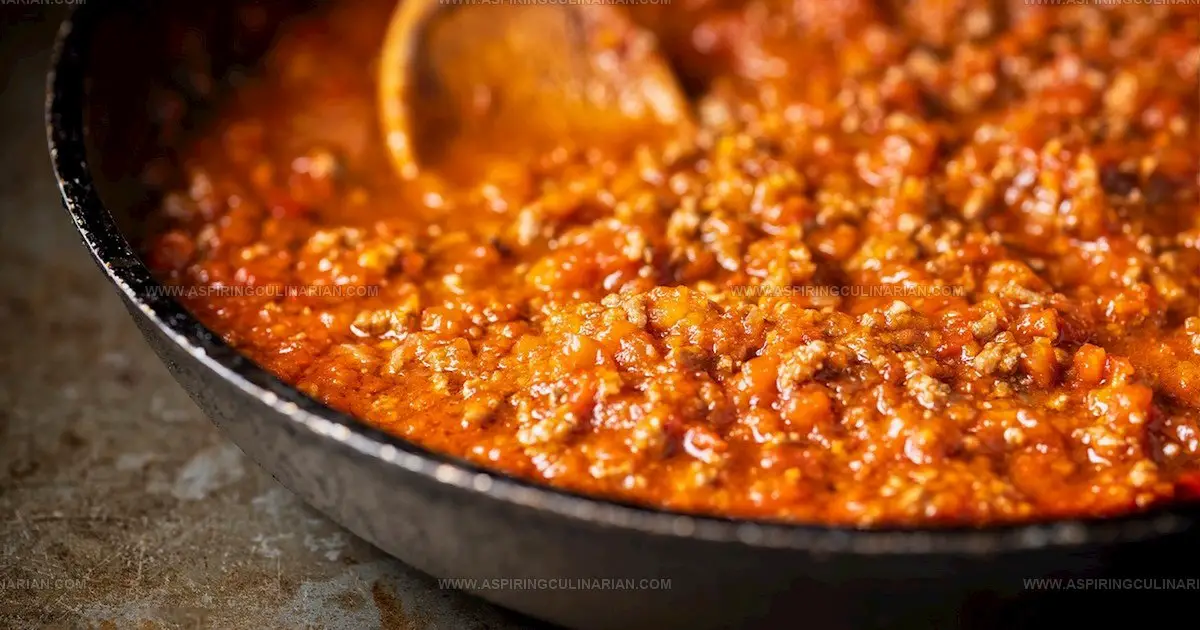
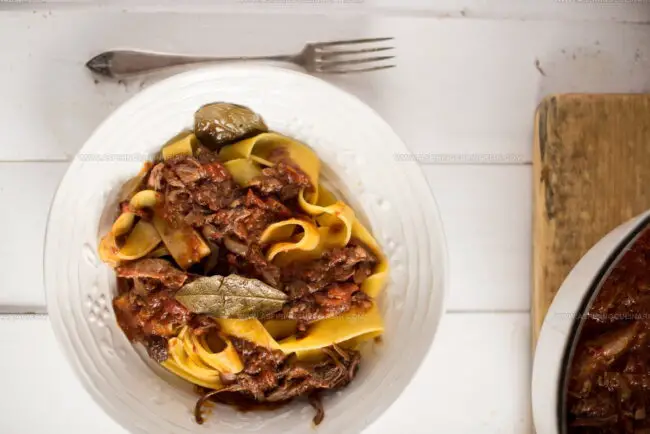
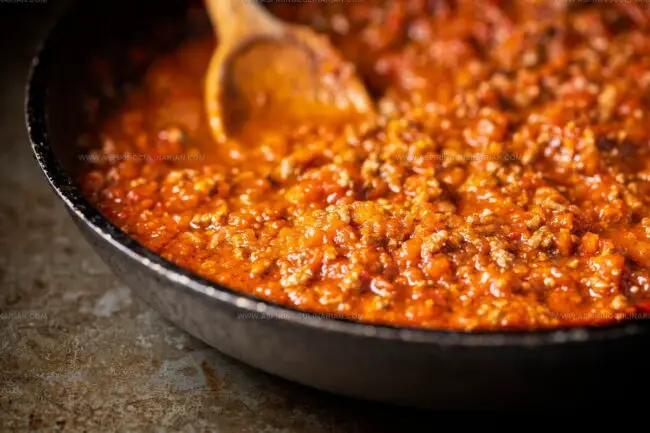
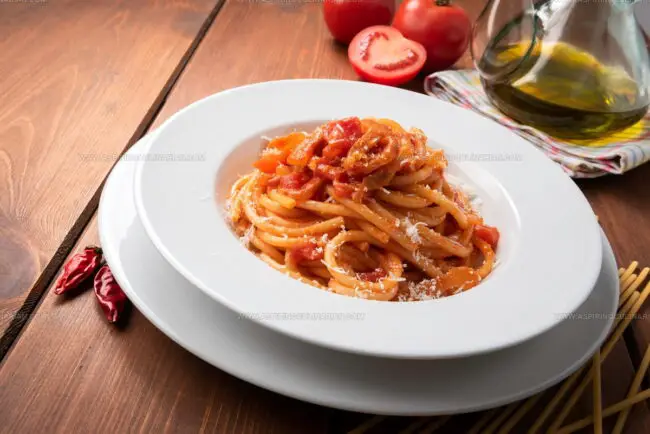
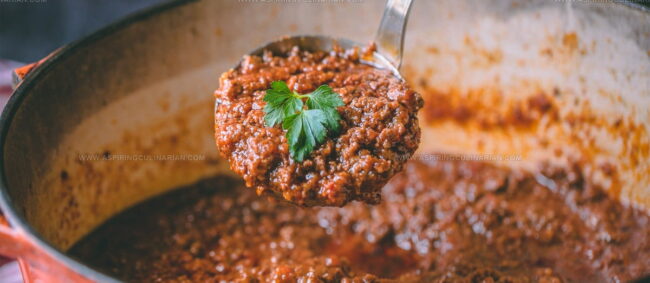
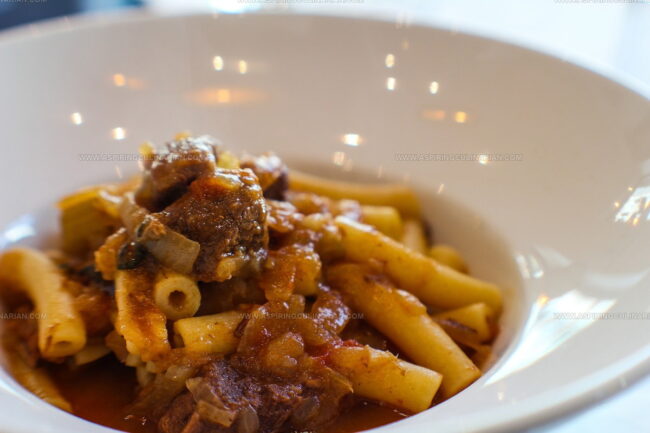
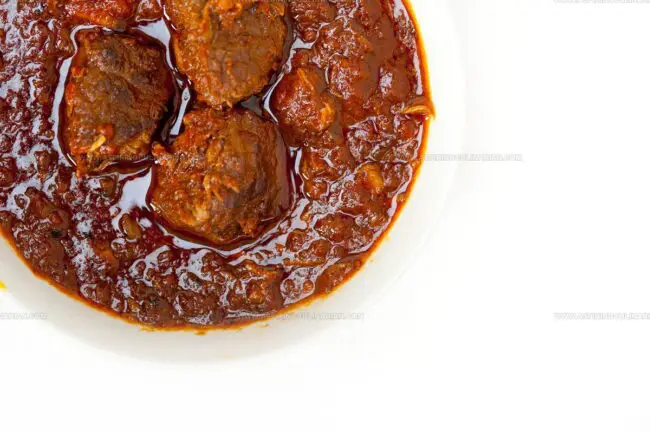
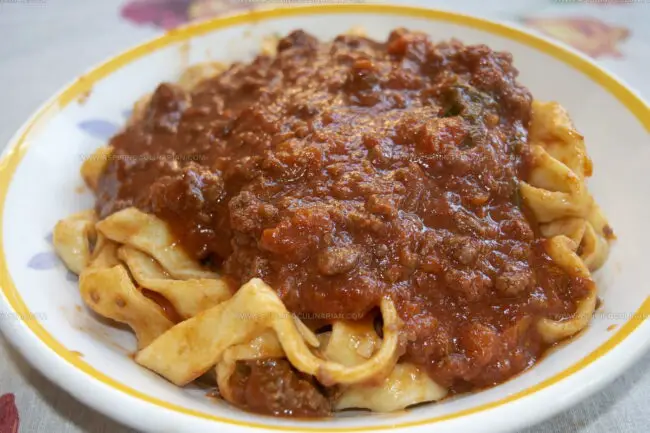
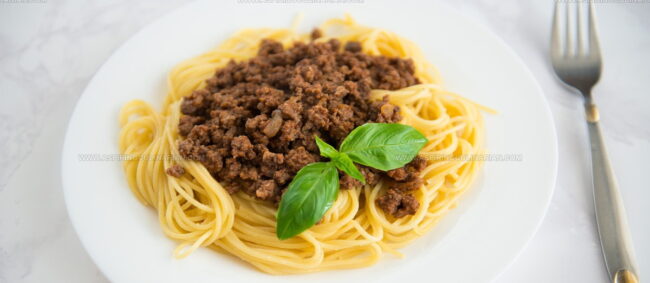
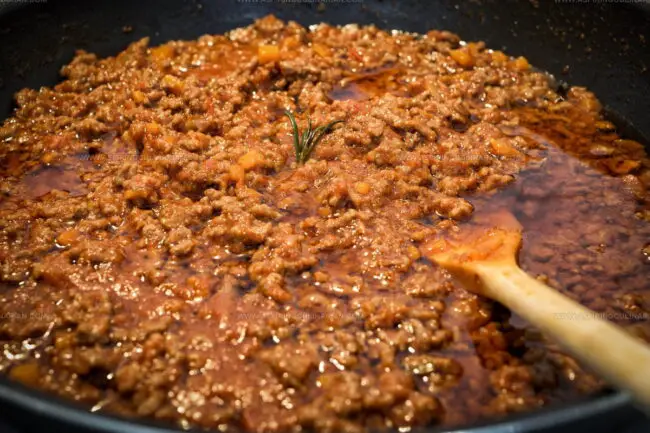
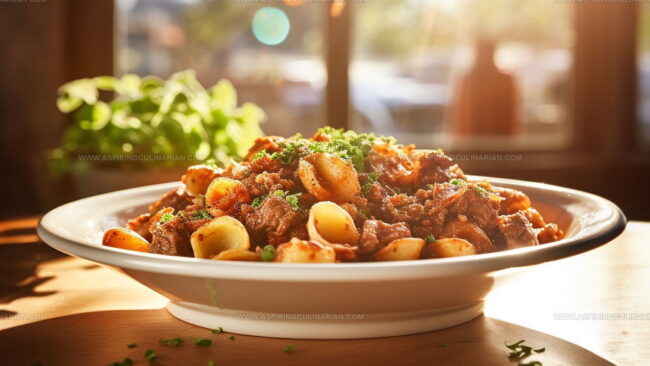
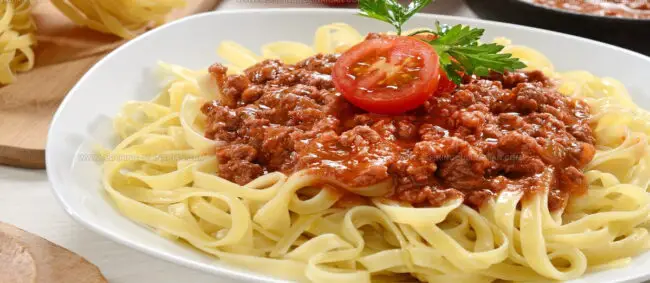
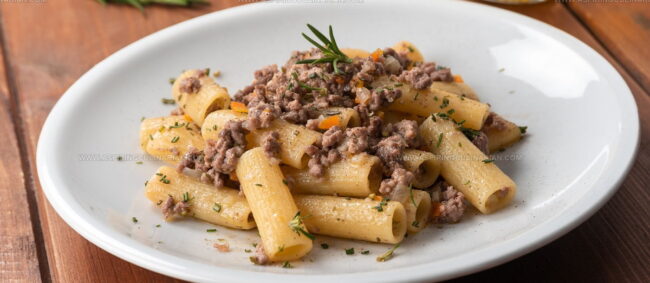
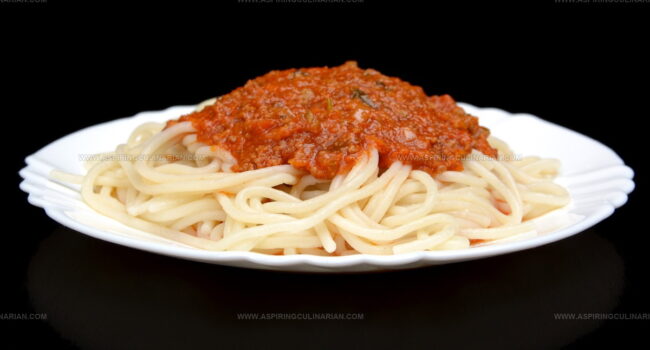
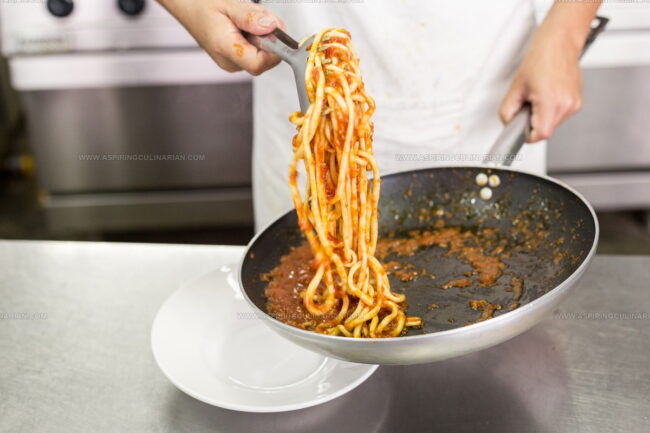
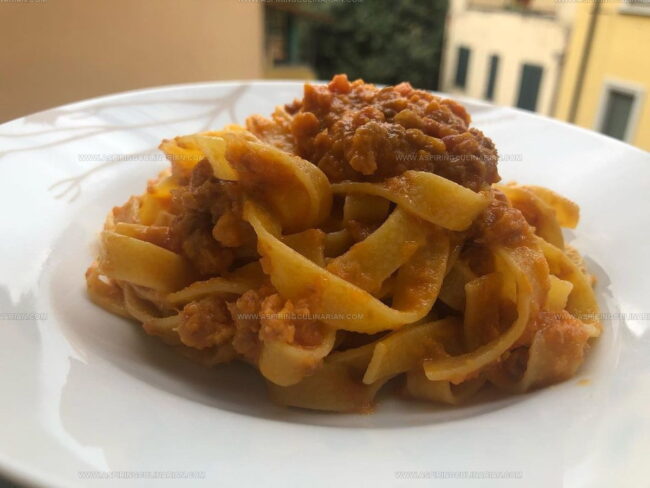
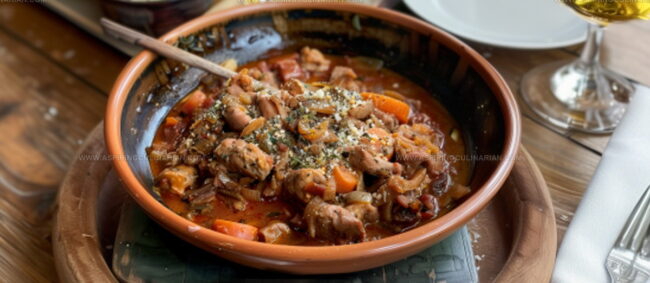
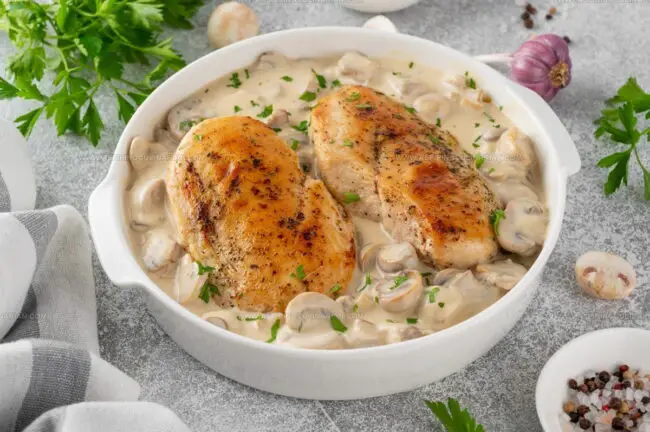
Lena Martinez
Contributing Writer & Culinary Educator
Expertise
Southwestern and Latin American cuisines, Vegetarian and plant-based recipe development, Culinary education and community outreach
Education
Santa Fe Community College, Santa Fe, NM
Certificate in Culinary Arts
Emphasized Southwestern cuisine and sustainable cooking practices
Lena grew up surrounded by the colors, spices, and traditions of the Southwest – flavors that sparked her love for bold, honest cooking. After earning her Culinary Arts certificate at Santa Fe Community College, she made it her mission to teach home cooks how to create flavorful, plant-powered meals without the fuss.
Her recipes are packed with vibrant ingredients, simple steps, and the kind of heart that turns a regular meal into something you’ll want to share. Outside the kitchen, Lena spends her time wandering farmers’ markets, trading family recipes, and helping young chefs find their voice through food.